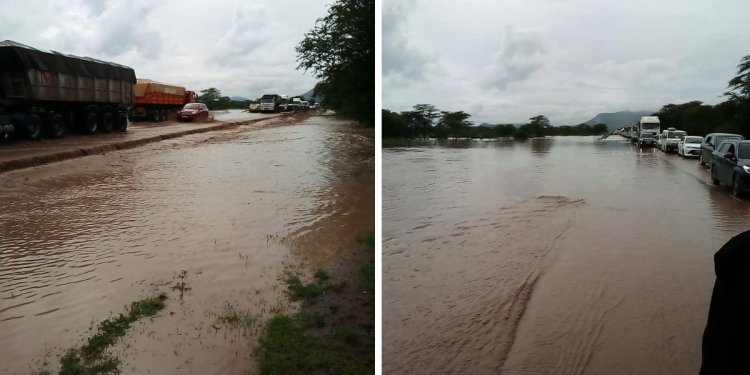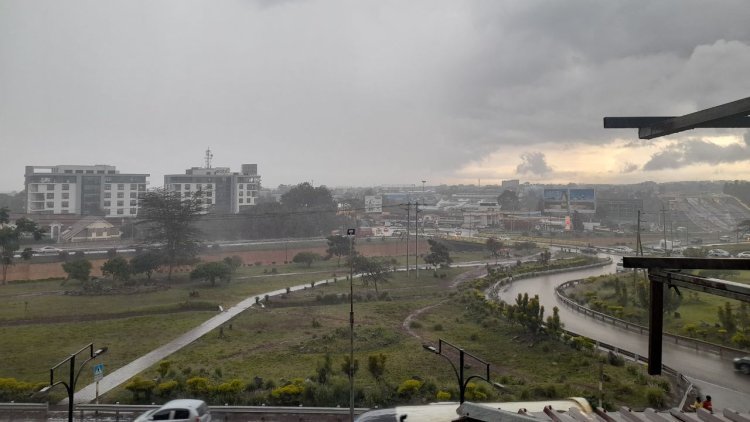Expect Floods, Landslides During El Nino Rains In These Areas [LIST]
The rains will begin in September and go on until January. They are expected to peak in October.
![Expect Floods, Landslides During El Nino Rains In These Areas [LIST]](https://viraltea.co.ke/uploads/images/2023/08/image_750x_64ef12fb2161f.jpg)
The Kenya Meteorological Department has highlighted some parts of Kenya likely to experience floods and landslides due to El Nino rains expected from October to December 2023.
Addressing the media on Wednesday, August 30, the weatherman singled out areas such as West Pokot, Kericho (Kipkelion West constituency), Elgeyo Marakwet (especially areas around the Keiyo escarpments) and Mt Elgon as areas likely to be hit by landslides.
Other areas include Narok (Narok South Sub-county), Nakuru, Baringo (Baringo North and Central Constituencies), Murang'a (In the sloppy areas of the county) and areas around Kilungu in Makueni County.
Areas expected to experience floods include the Western Kenya region along River Nyando in Nyakach and Nyando: lower areas of River Nzoia, Winam Gulf and lower reaches of River Sondu.

Floods along Mombasa Road along Sultan Hamud Township on April 22, 2023. /NPS
Others include the Rift Valley region (Gilgil, Narok Town, Suswa), the Coastal region (Voi town, Mwatate, Tana River Delta and Garissa) and North East Kenya (Lodwar and Lokichar). Flash floods will be prevalent in North Eastern Kenya where there are many seasonal rivers
Major cities and towns including Kenya's capital, Nairobi as well as Mombasa, Nakuru and Naivasha will also experience floods.
The meteorological department also named a number of counties with a 99 per cent likelihood of experiencing high rainfall such as Kisii, Elgeyo Marakwet, Bungoma, Trans Nzoia, West Pokot, Vihiga, Laikipia, Nakuru and Narok.
In the north-western counties of Turkana, Marsabit and Samburu, the met department said occasional rainfall above the long-term average for the season is expected.
“In the highlands east of the Rift Valley, Nairobi included, rainfall is expected throughout the season above the season's long-term average. The rainfall will be well distributed in terms of space,” said the department.
In the lowlands, an above-long-term average for the season is expected while in the north-eastern counties, occasional rainfall of an amount slightly above average for the season will be experienced. Wajir and Mandera counties will get the highest rainfall.
The rains will begin in September and go on until January. They are expected to peak in October.
El Niño is characterised by above-average warming of the ocean surface in the central and eastern tropical Pacific Ocean, and during this period east winds blow weaker than normal.
The phenomenon typically occurs every 3 to 5 years and causes excess rainfall and flooding in the East Africa region.
In March, the Food and Agriculture Organization of the United Nations (FAO) warned El Niño will return this year following a three-year La Niña phase. La Niña involves the cooling of sea-surface temperatures across the east-central equatorial Pacific, and the east winds are stronger.
The world experienced a third consecutive La Niña event in 2022 and early 2023, a rare occurrence that has happened only twice since 1950.
La Niña events are commonly associated with wetter conditions in Australia and drier conditions in the United States of America, South America and East Africa.


 admin
admin 




